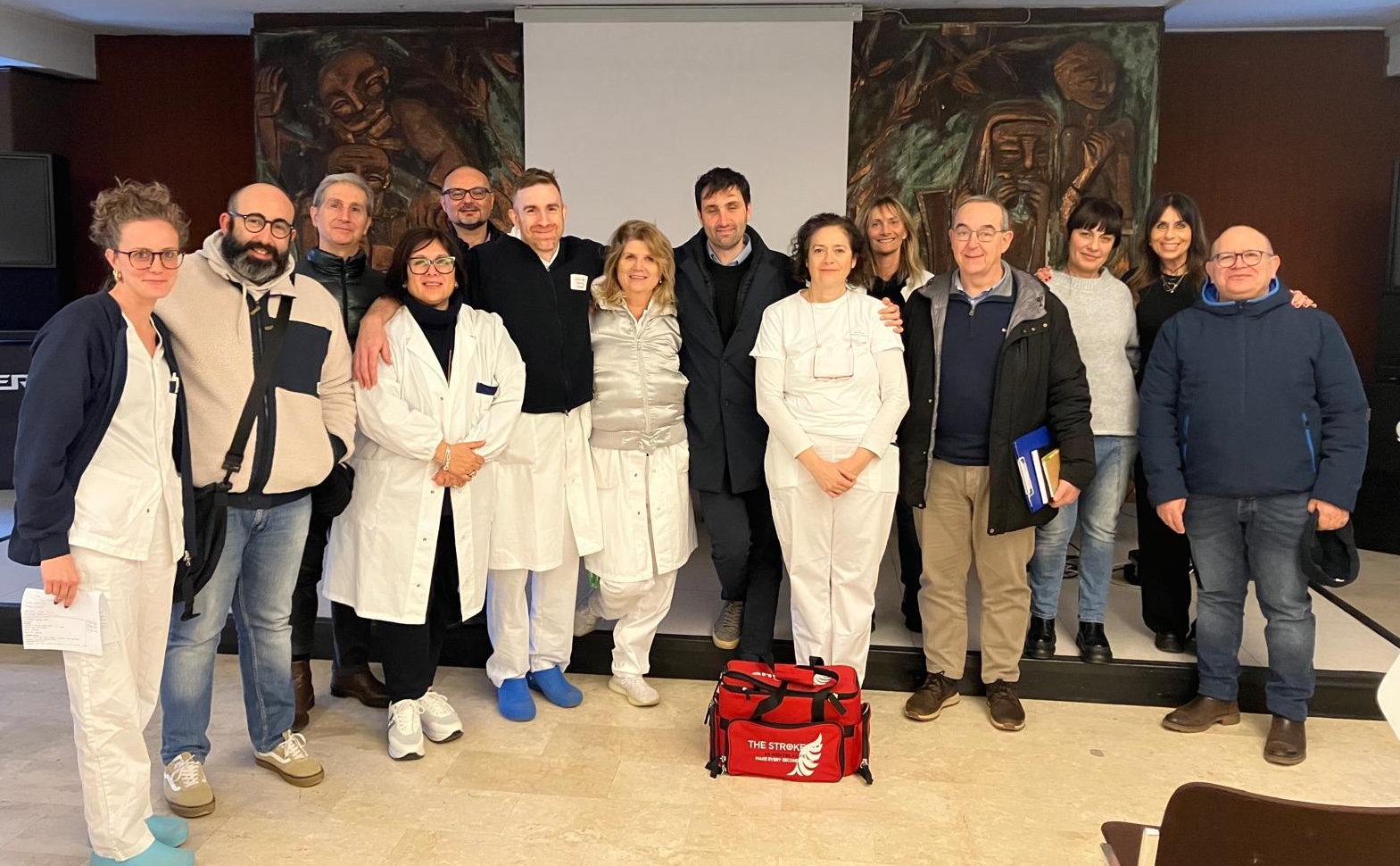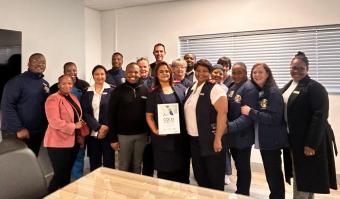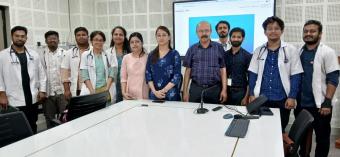
Numbers are a universal language that we use to measure, compare and solve problems. They’re our building blocks for understanding and describing the world – and they are fundamental to the story of stroke at the National Institute of Science and Health for Ageing (INRCA) in the city of Ancona on Italy’s Adriatic coast.
There are, first of all, the big numbers. The INRCA is a public institution of scientific research and care with a focus on geriatrics and gerontology. For over 60 years it has conducted high quality scientific research on longevity, frailty, and morbidity in older people, while providing treatment and rehabilitation of neurodegenerative and vascular diseases and their complications.
Although they treat patients of all ages that come through the doors on the Via della Montagnola, the median age of INRCA patients is older than 80.
This predominance of geriatric patients means stroke is complex, says Dr Letizia Ferrara, a clinical risk specialist and medical director at INRCA Ancona for the past 20 years. Treatment decisions are complicated by the presence of comorbidities and, not infrequently, ethical considerations related to dementia, which affects close to one third of their patients.
Despite such challenges, INRCA Ancona recently won their first ESO Angels Award, a milestone reached as the result of a collaborative relationship with the EMS, and implementing the key priority actions for reducing door-to-needle (DTN) times in treating acute ischaemic stroke. They also benefited from a textbook consultancy by Angels consultant Linda Serra who supported their journey and now celebrates their success.
There are now, therefore, also the small numbers – such as 18, the number of minutes it took for a pathway simulation during which the INRCA team took their new stroke protocol for a test-drive. Or, more recently, 16 minutes, their real-life DTN record to date.
Change needs allies
But, success being as much a people game as a numbers game, there is another way to tell this story. Risk management and clinical pathway organization are Dr Ferrara’s specialty, and the stroke pathway at her hospital had come under her scrutiny for some time. Change in stroke care, however, is rarely just a clinical matter; more often it requires a cultural paradigm shift. And to plant the seeds for such a radical change in thinking, it helps to have someone tilling the soil beside you.
A fellow gardener arrived in 2021, from the Umbrian capital Perugia, where Dr Leonardo Biscetti had just completed his residency in neurology. Research interests in Alzheimers and degenerative and vascular conditions had brought him to Ancona where he immediately sought to establish a culture of emergency in stroke treatment.
INRCA Ancona was poised for change. The new trajectory for stroke management would enjoy the enthusiastic support of all members of the emergency department, and radiology and neurology units, and proceed with crucial contributions from ED directors Prof. Antonio Cherubini and Dr Fabio Salvi, radiology directors Dr Enrico Paci and Dr Mirko Giannoni, and of course the head of neurology, Dr Giuseppe Pelliccioni.
The next breakthrough would arrive as an outside perspective that would help them map the road to success. INRCA joined MonitorISA, the semiannual quality monitoring program conducted by the Italian Stroke Association (ISA) and the Angels team in Italy, and the results were sobering. The numbers revealed that their door-to-needle time far exceeded the national target. But with Linda’s feedback they were able to see exactly what the gaps were, and in 2024 a targeted quality improvement program was on its way.
Fantastic four
Four key interventions made all the difference to patient outcomes at INRCA, and landed them a gold award.
- Right at the start of the pathway, a critical collaboration with the Centrale Operativa 118 Ast Ancona (themselves diamond winners in the EMS Angels Awards), ensures the hospital is prenotified of suspected stroke cases.
- Hospital-level coordination with the 118 is rare, but here this well-developed working relationship facilitates the next important change – thanks to prenotification, the neurologist goes to the emergency room before the patient arrives, setting in motion a rapid sequence of events.
- The action centers around two phone calls – one from the ER to radiology where the patient will have priority access to the CT scanner, and another to the stroke unit to summon the stroke nurse to the radiology department.
- Once the treatment decision has been made, thrombolysis will commence right away, delivering treatment at CT as mandated by the ISA’s TAC project.
Success hinges on the participation of everyone along the pathway. “The difficulty we had at the start was that everyone looked at stroke from their own point of view and didn’t consider the entire program,” Dr Ferrara says. “Organizing a multidisciplinary team, where every single actor was aware of their role in the system, was very important. Everyone now knows exactly what is expected of them when a stroke patient arrives.”
The INRCA team has made full use of Angels learning resources, right up to the simulation that exposed the weaknesses of their previous process and validated the new protocol.
“It was an interesting and fun experience,” Dr Biscetti says. “We did two simulations, one with the previous program and one with treat at CT.” It was that second round, in which their DTN dropped from 45 minutes to 18, that scripted a new future for this specialist hospital.
Age is (just) a number
The importance of a high-functioning stroke pathway in a setting where the median age of patients adds layers of complexity and risk to decision-making, cannot be overstated. Existing stroke guidelines do not specify an upper age limit for the administration of intravenous thrombolysis, leaving space for an individualized approach, but trials exclude patients with dementia and ethical concerns about treating patients with limited autonomy continue to be the subject of debate at congresses.
Dr Biscetti cites the case of an elderly woman who presented with aphasia. “In this case,” he says, “the patient was affected by dementia but before her stroke she’d been able to speak and recognize her relatives.”
A decision to treat was made on the grounds that aphasia would affect even this patient with partial autonomy in her daily life – a courageous decision that, while it didn’t deliver a complete recovery, helped the patient regain aspects of her speech. As a result, the fabric of family life was kept intact for a while longer.
This, too, was a story about people and numbers – because whether you measured the outcome in the tally of days or the sum of conversations, there were people for whom these numbers mattered.



